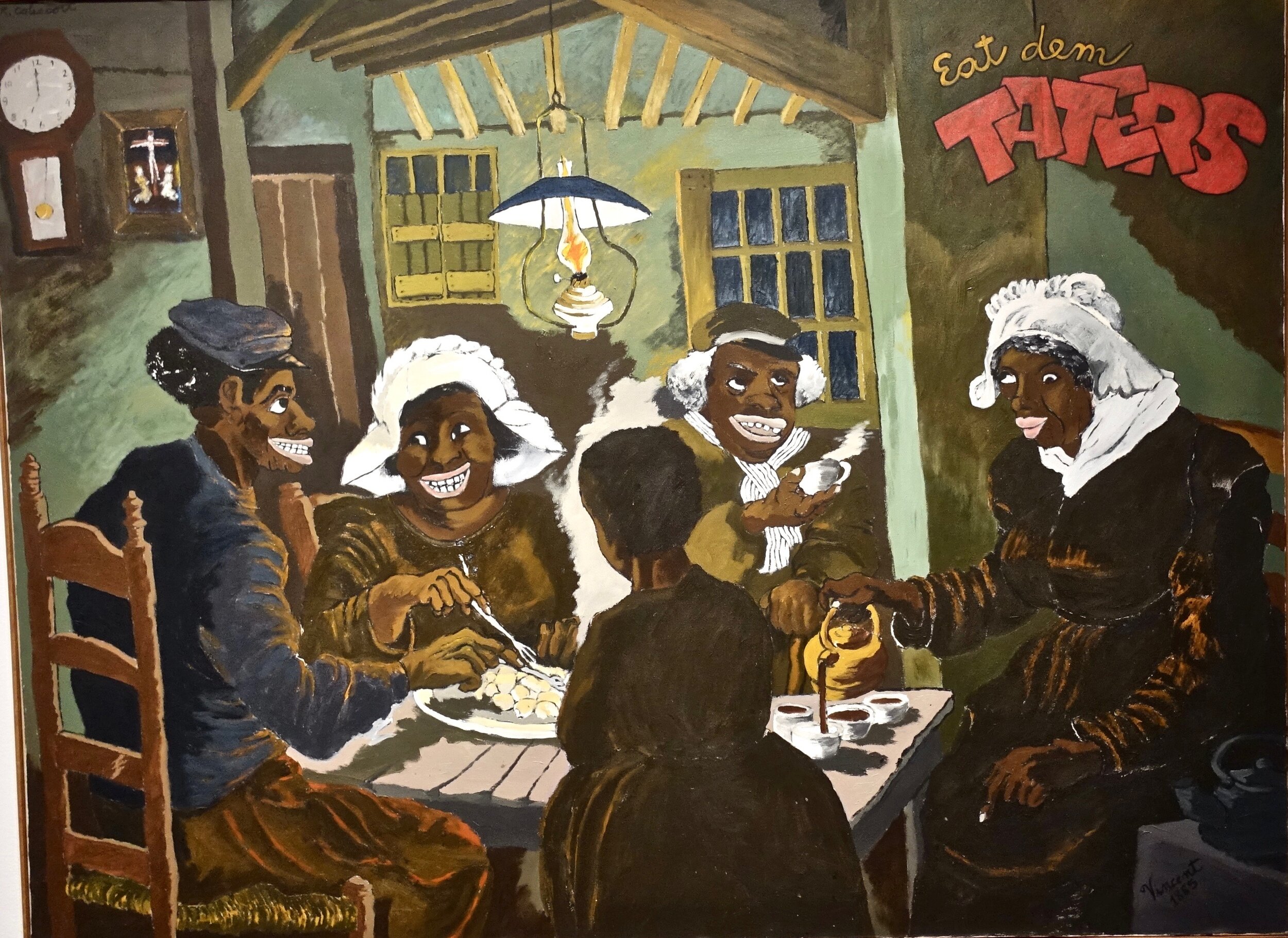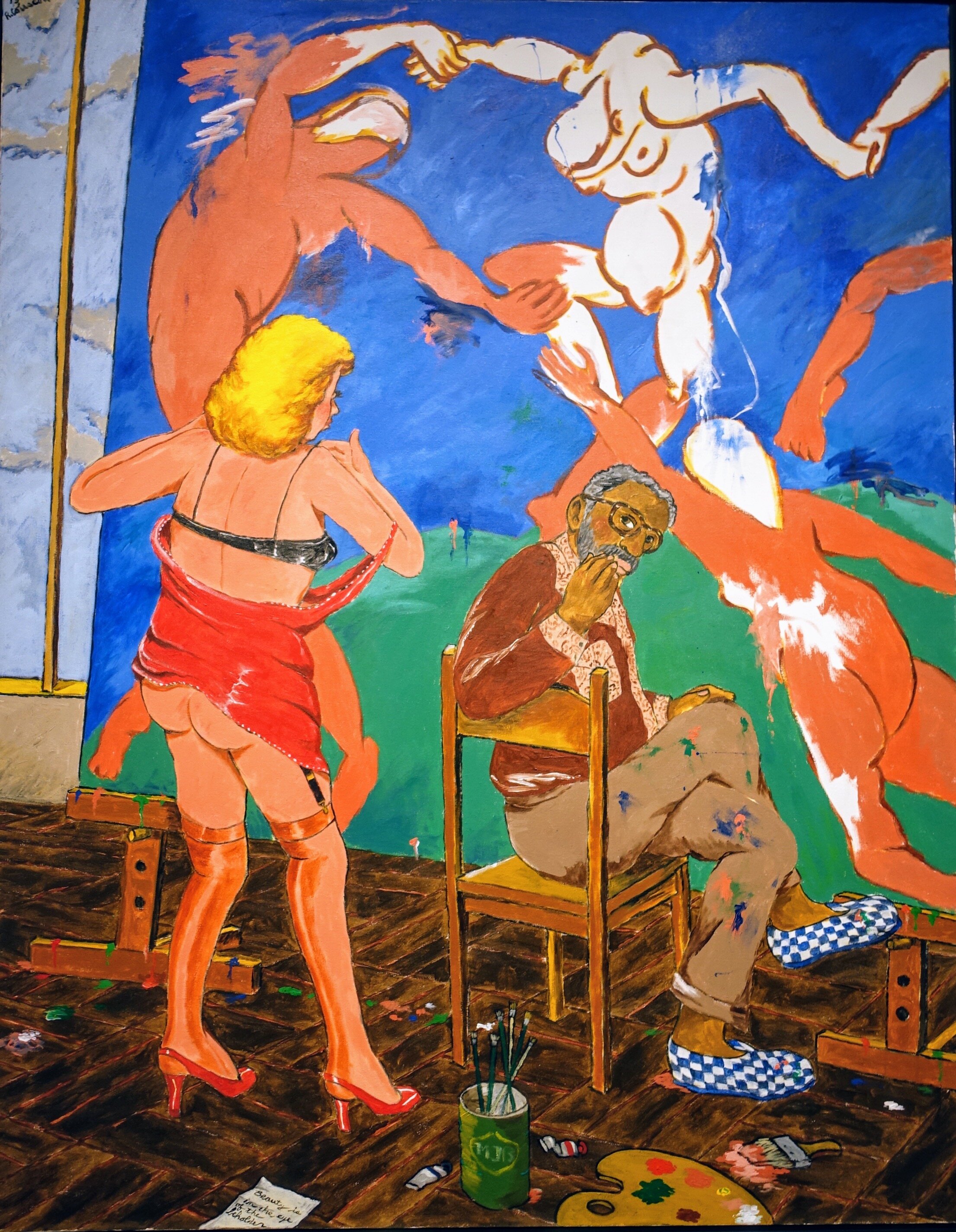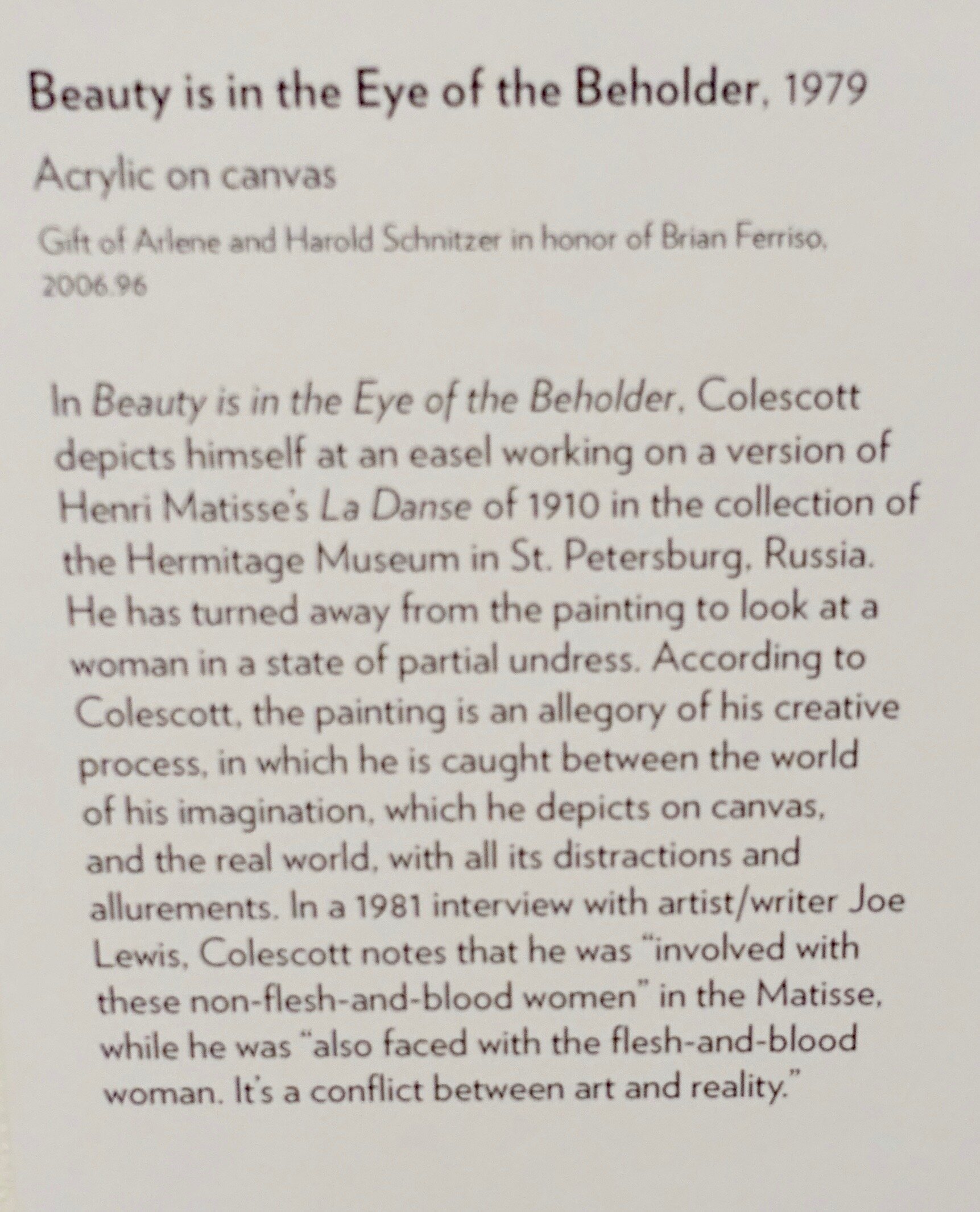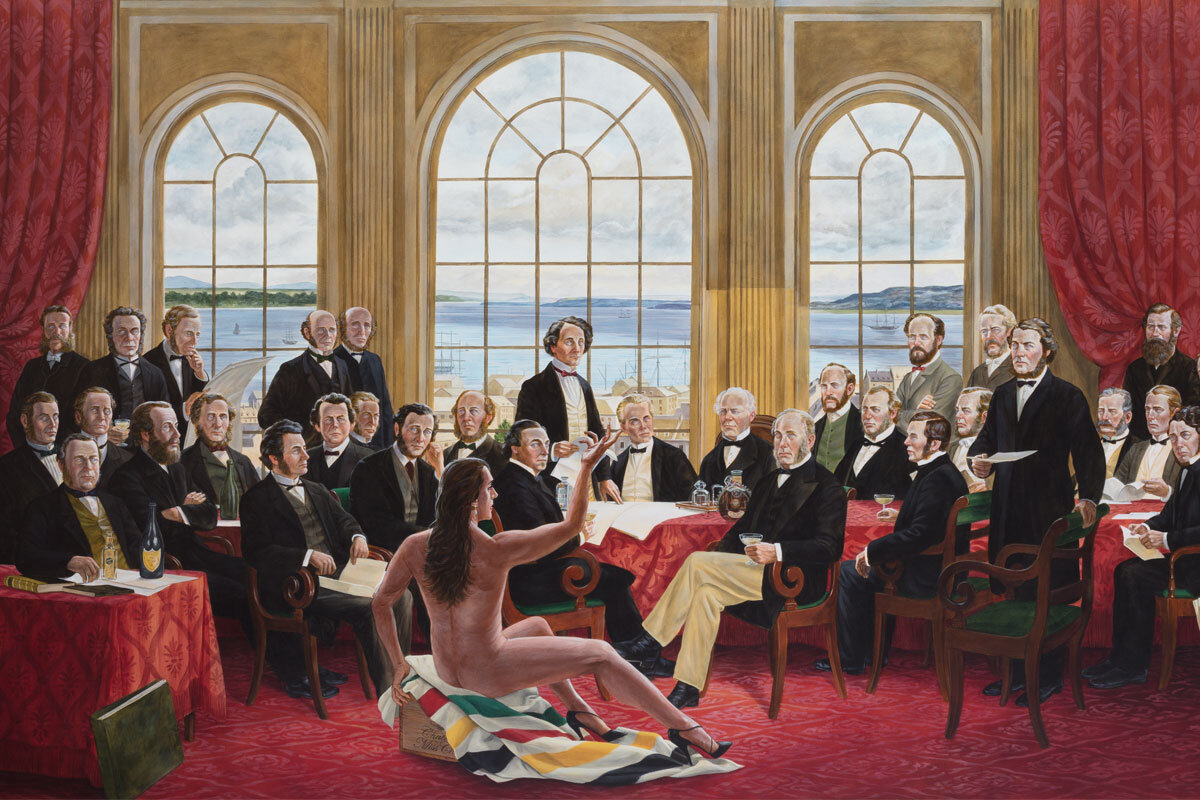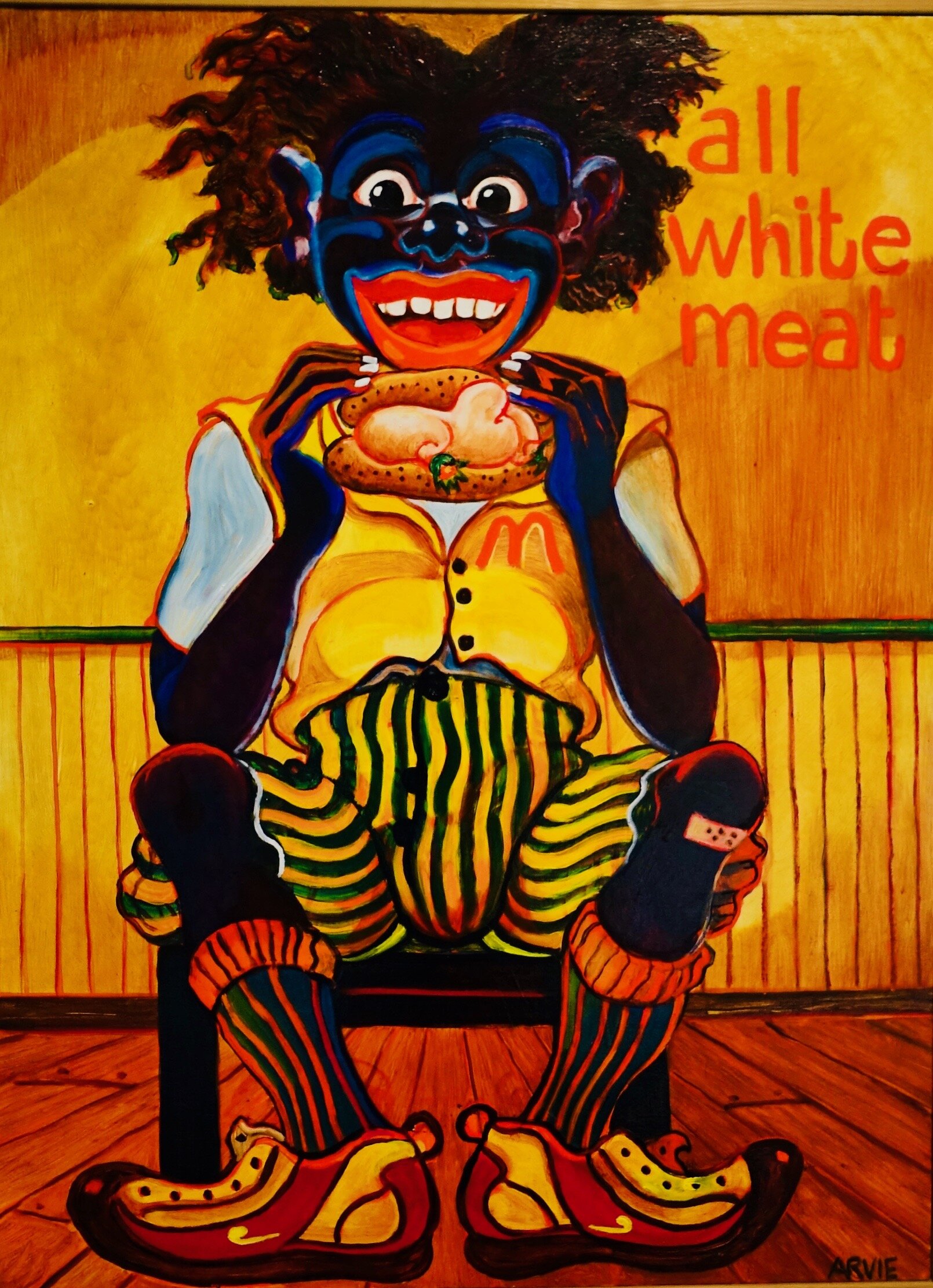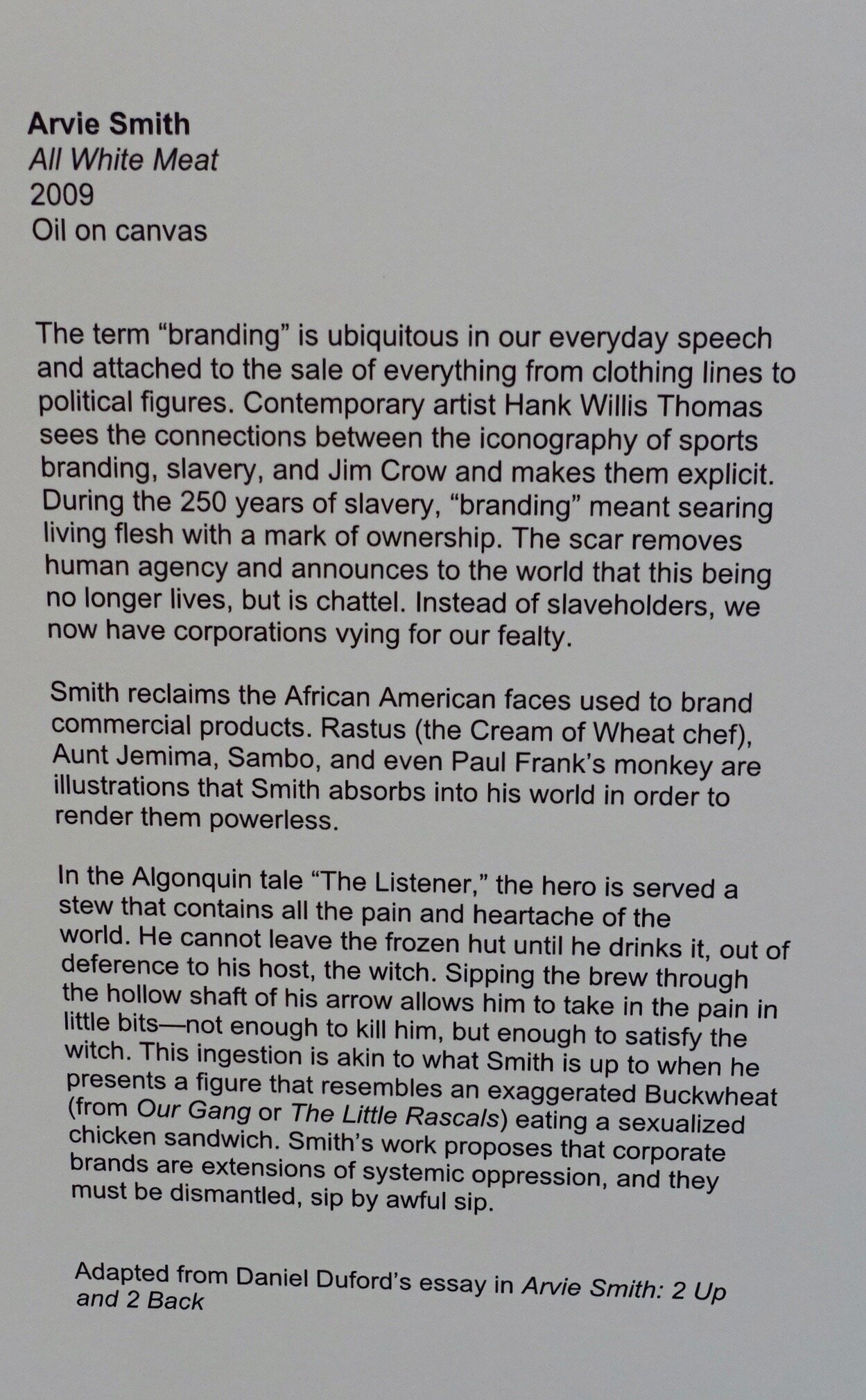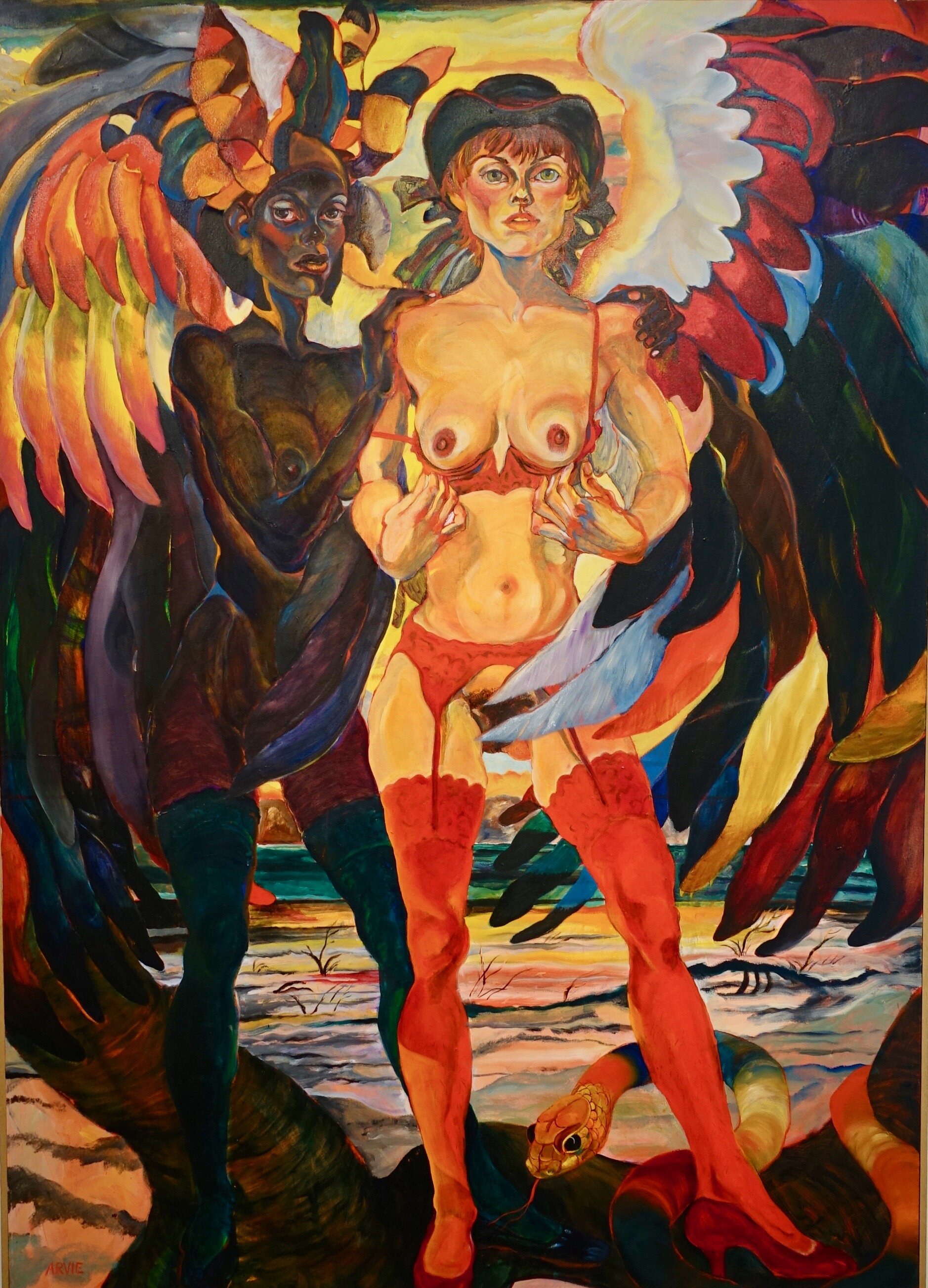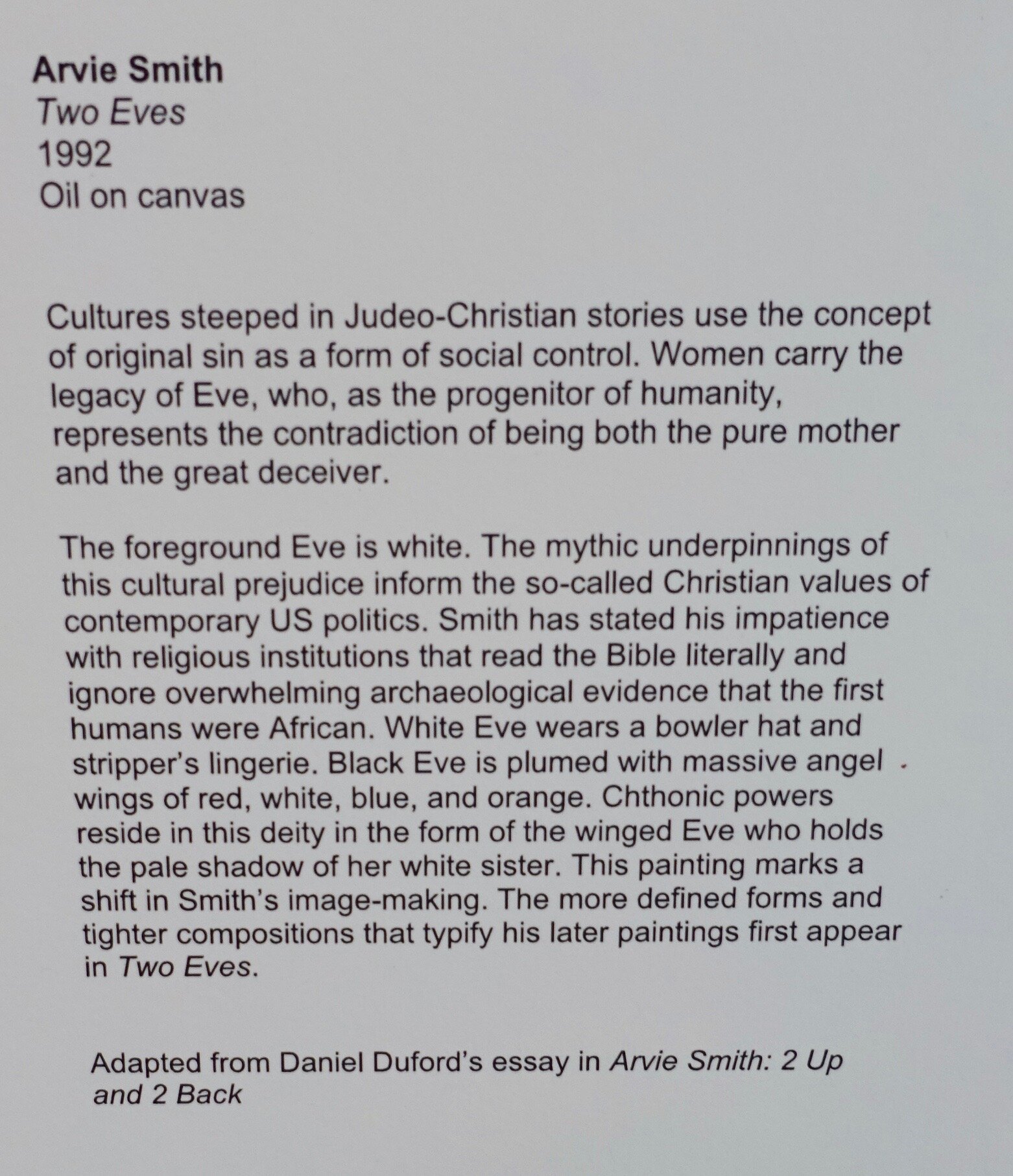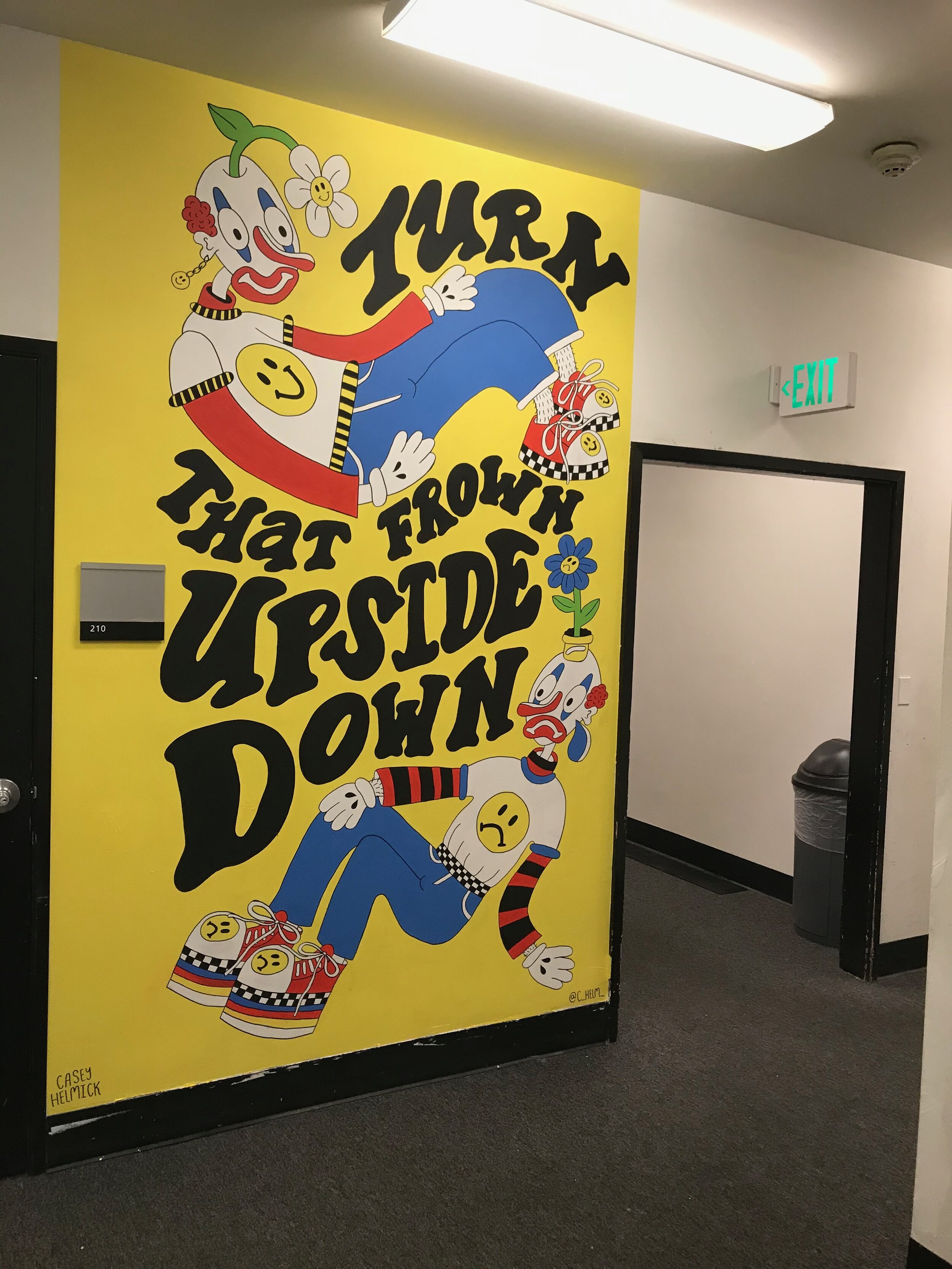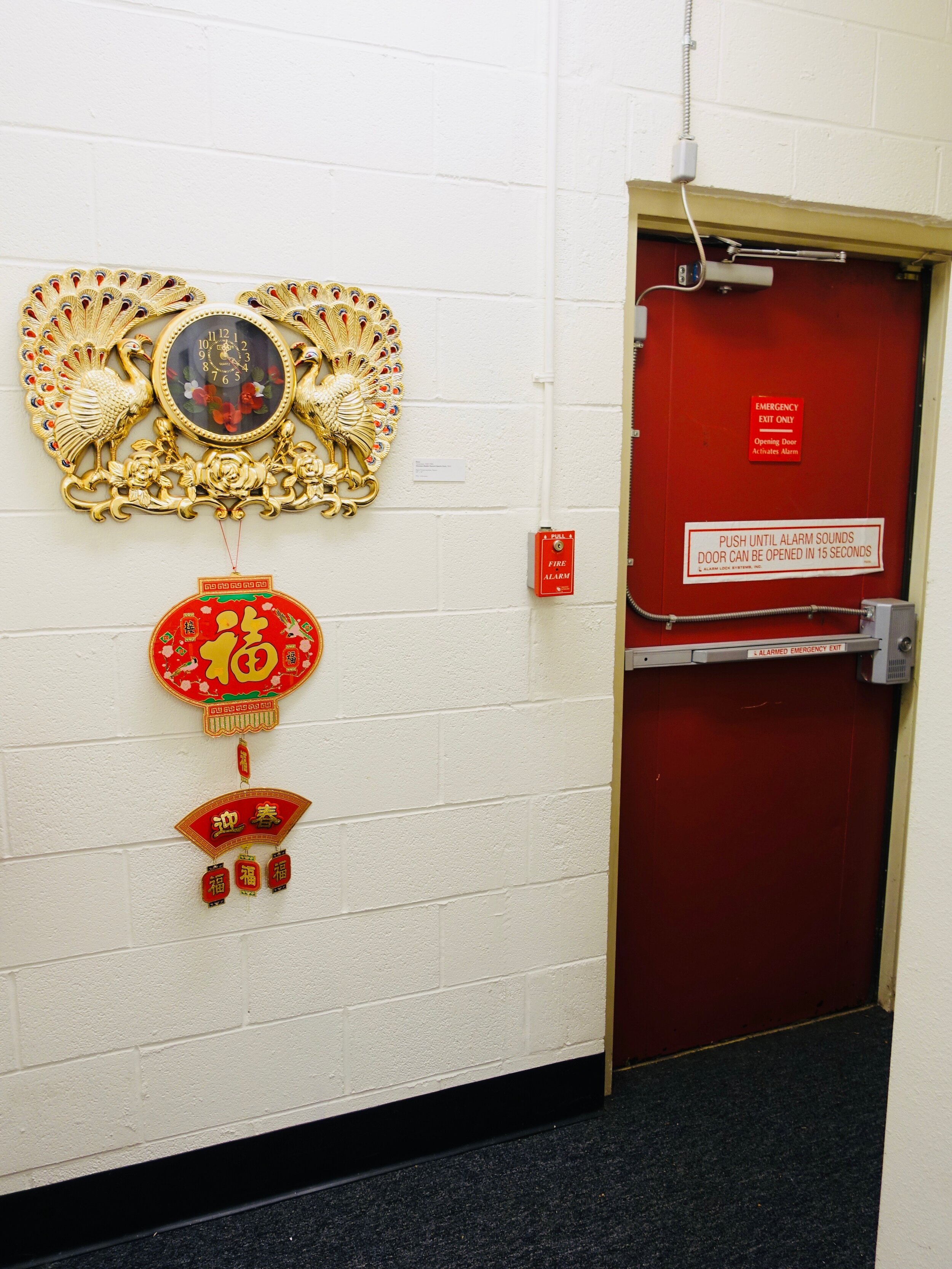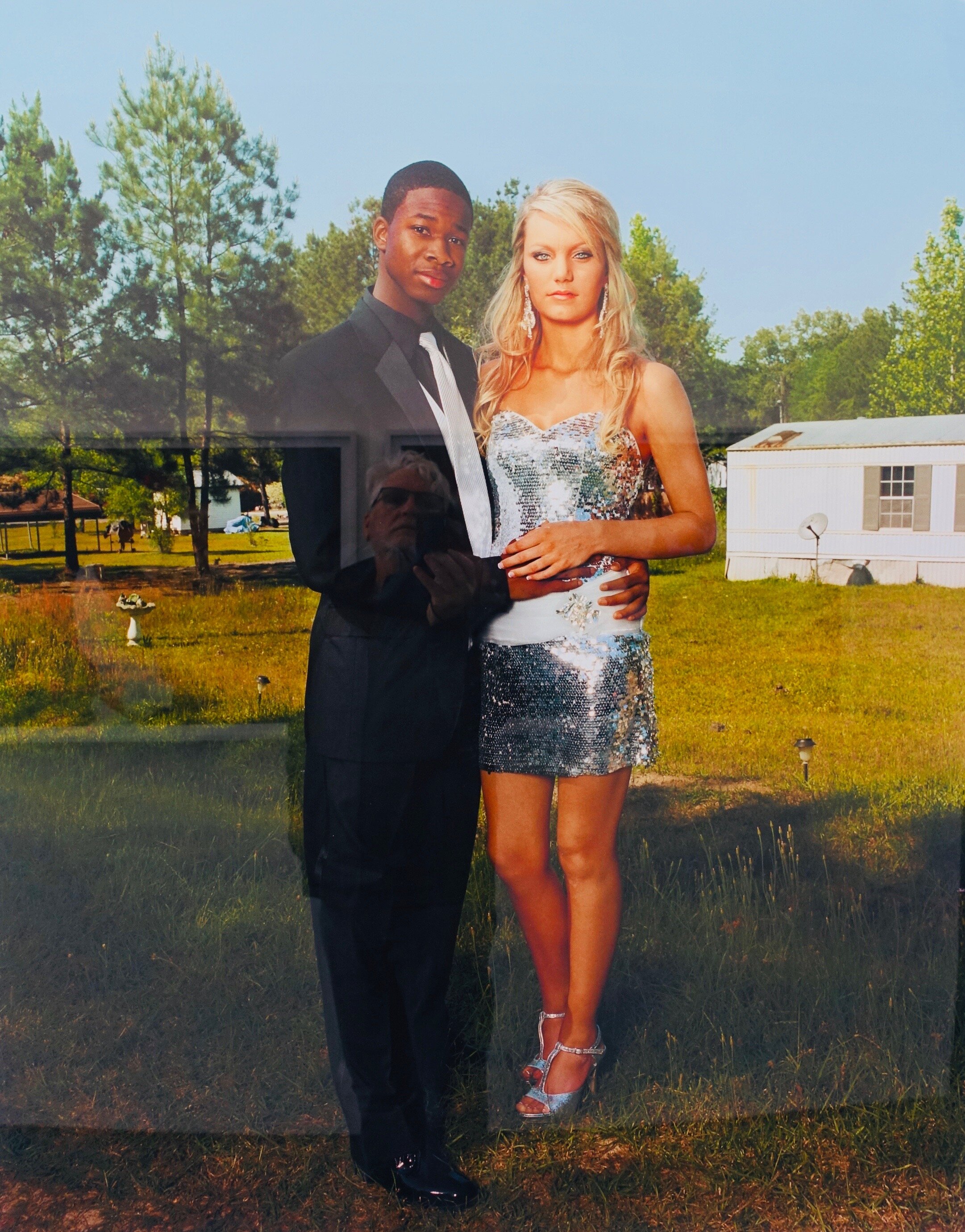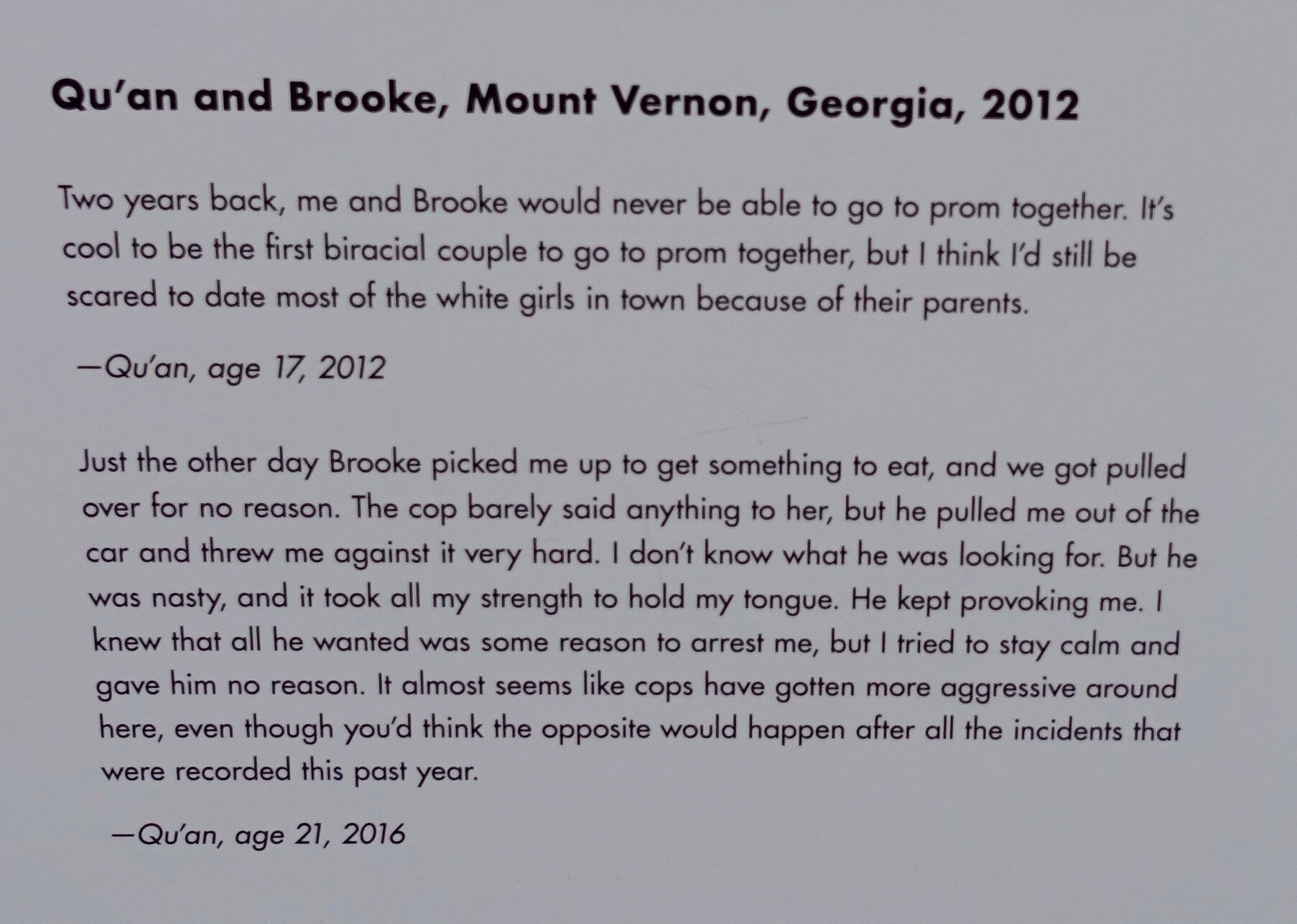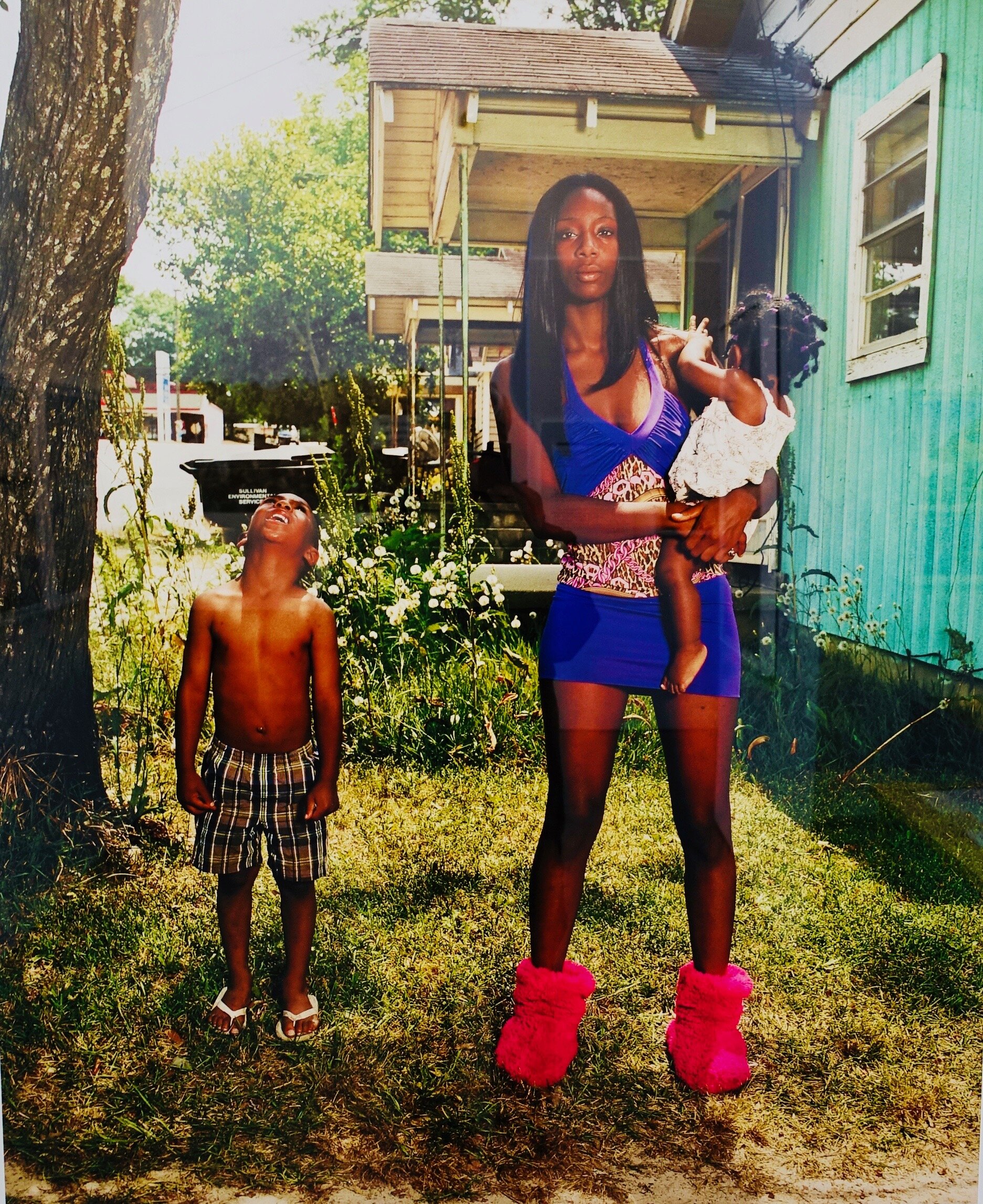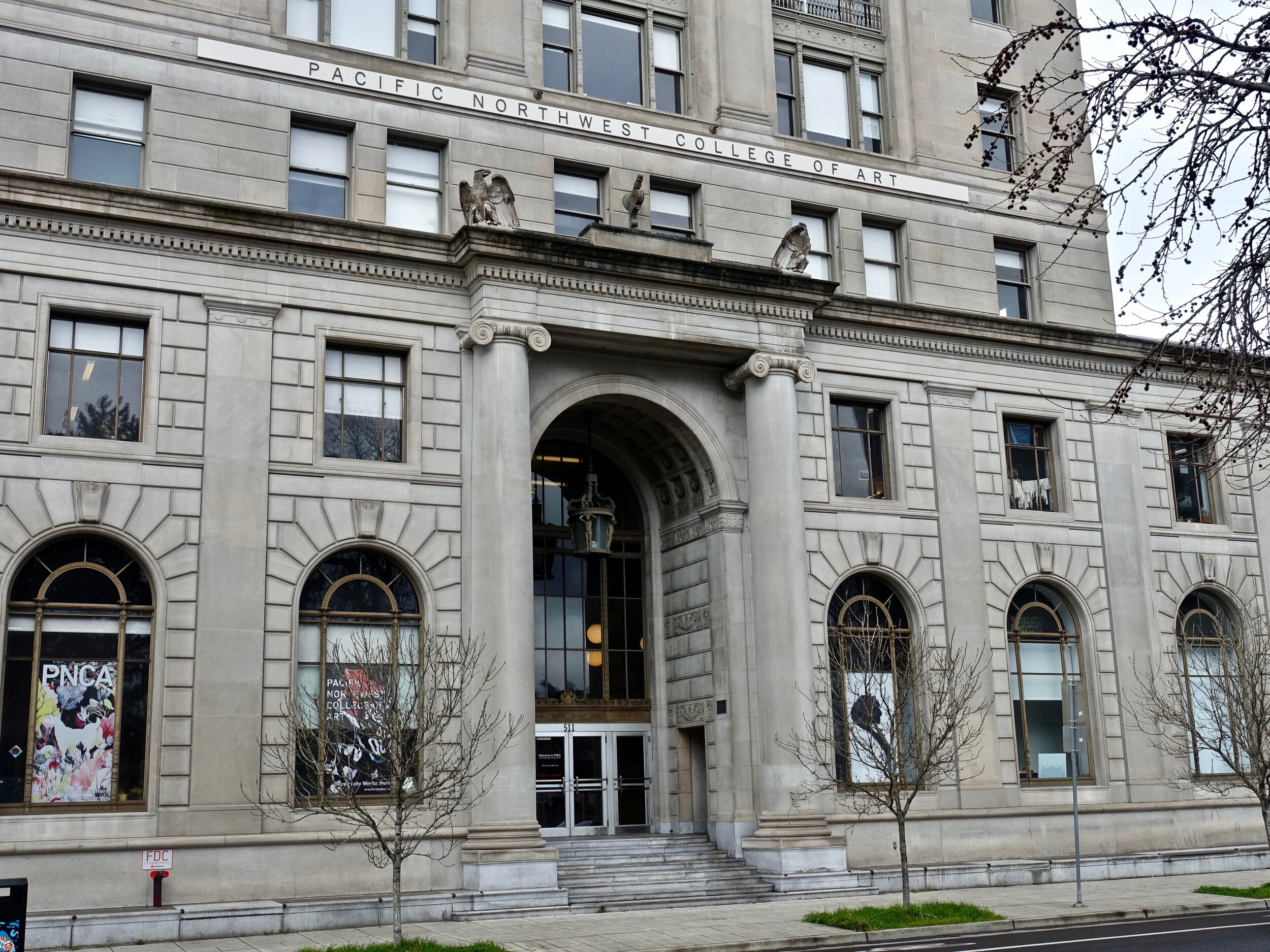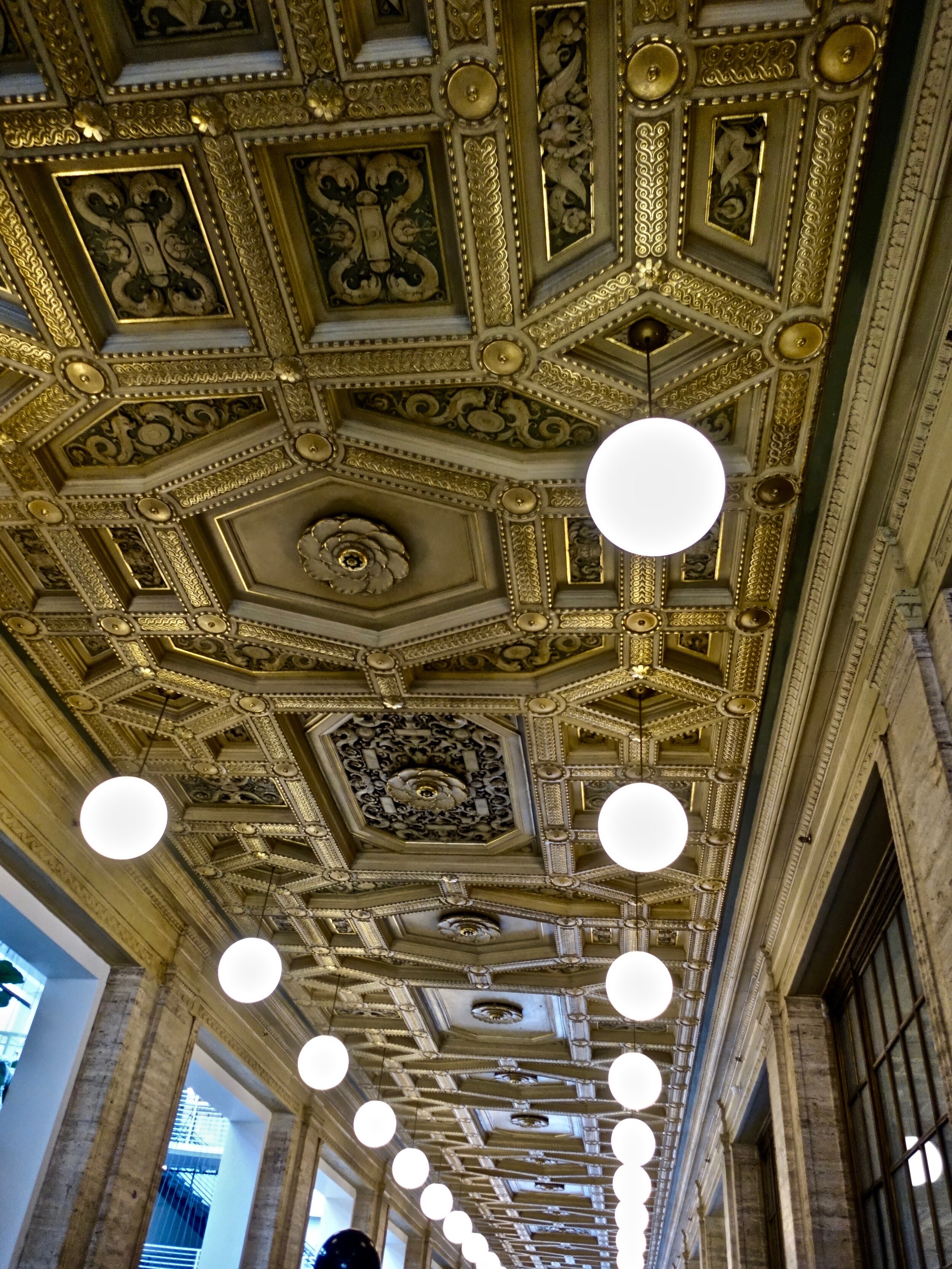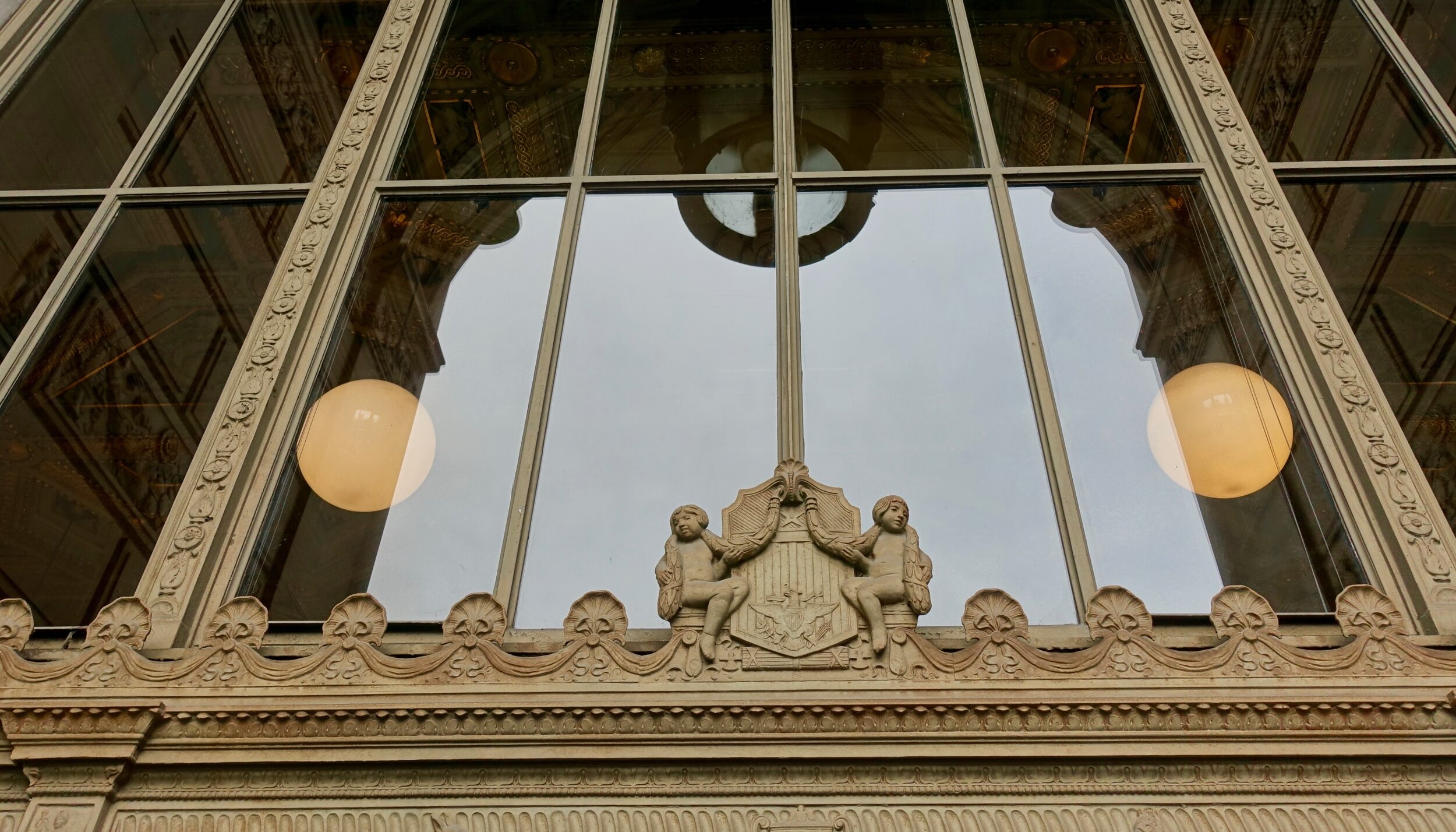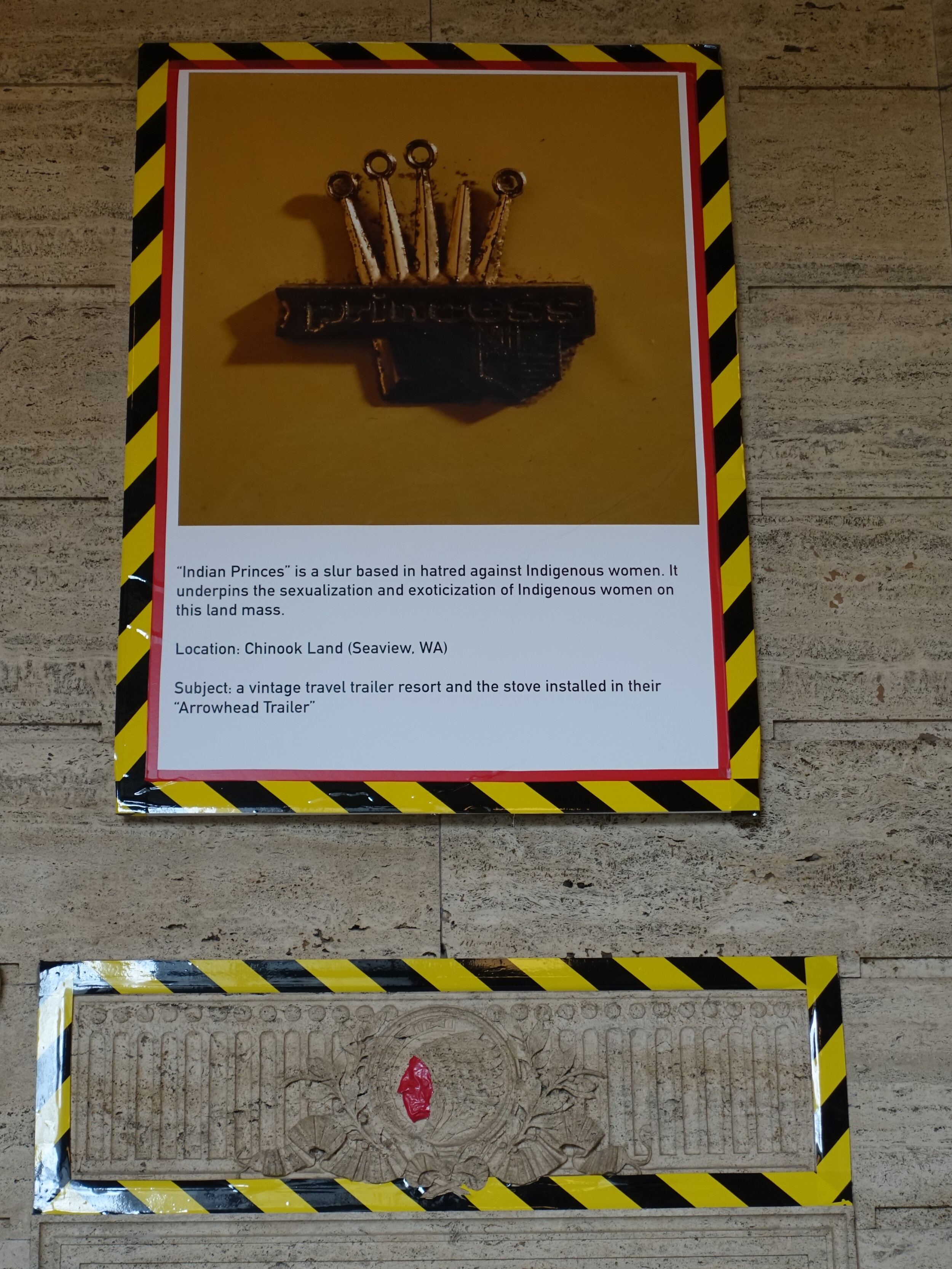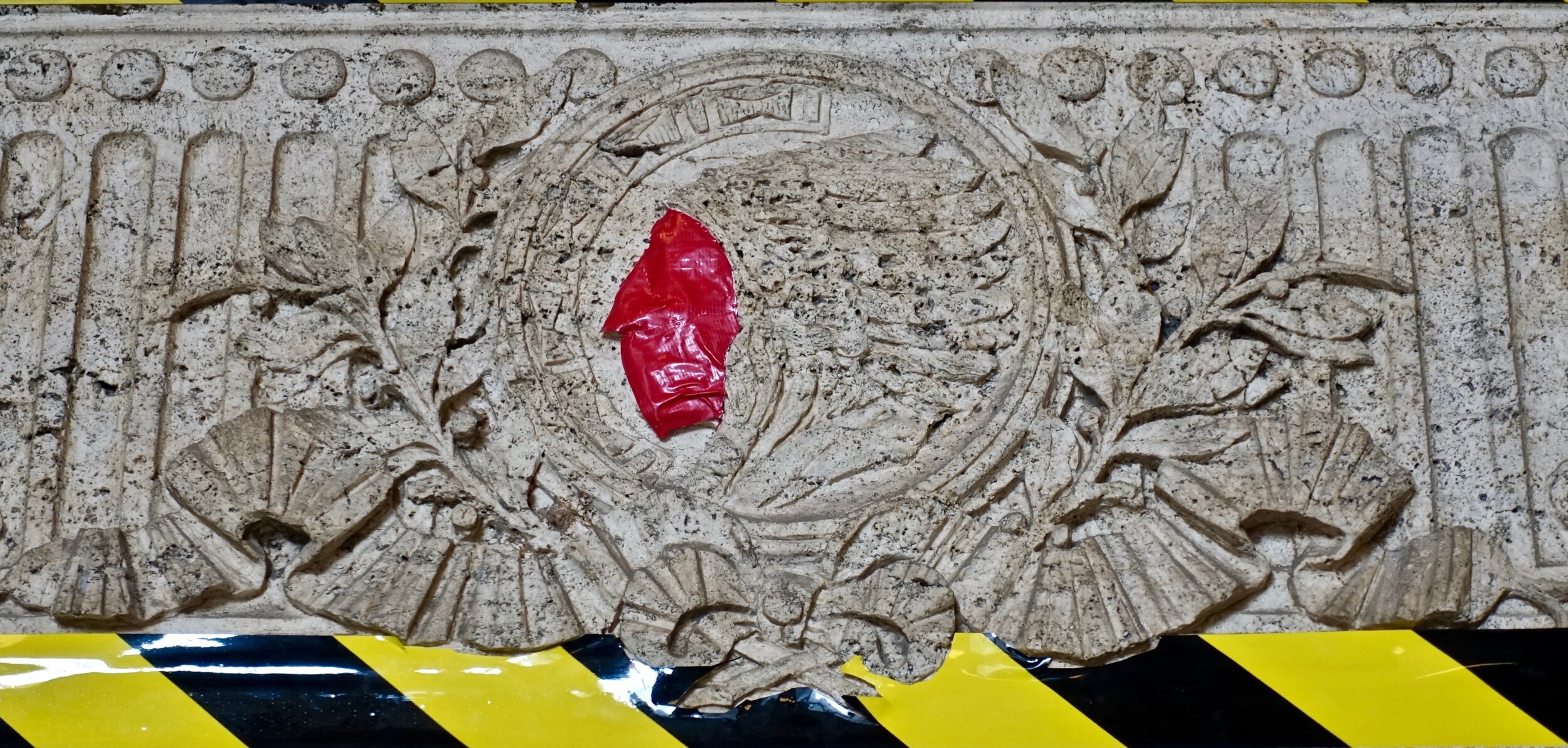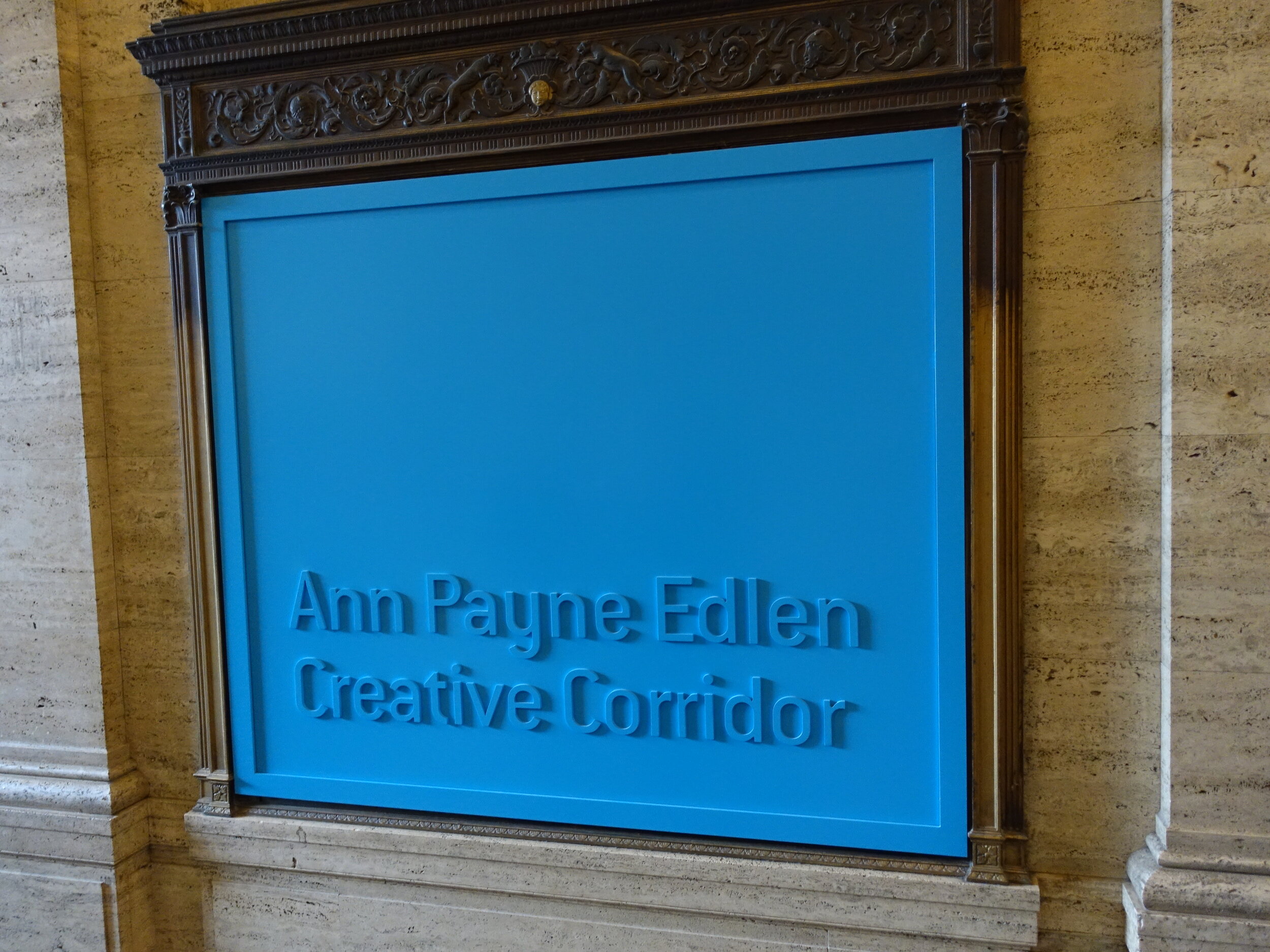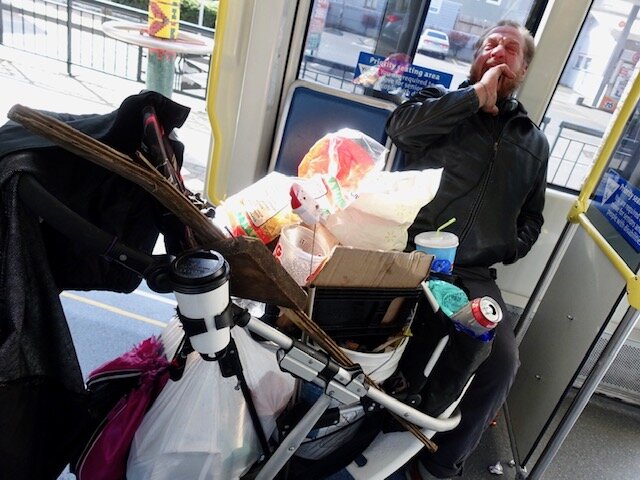Portland Oregon: A Visual Arts Mecca!
Note: I held off posting this blog due to the COVID crisis which halted travel to other countries. However, with the “Black Lives Matter” uprising, I think this blog is very relevant given much of the art we saw during our early March 2020 trip to Portland, Oregon dealt with the history of racism in America. If you read to the end, you will also learn a bit about the Portland’s huge homeless crisis.
Portland Oregon: A Visual Arts Mecca
When you say you are going to Portland the first thing people say is “You have to check out the food carts and craft beer scenes.” Nobody says you will enjoy the great visual art scene.
Indeed, Portland is well known as the home of the “food cart” pods. Unlike other cities with their mobile food truck culture, most of Portland’s street food vendors stay in one place, often in groups dubbed “pods” on surface parking lots. At last count, there are over 600 “food carts” scattered around the city. Think outdoor food courts. And yes, Portland is home to more breweries than any other city on earth - 75+ and still growing.
But on our recent trip it was the art galleries and their thoughtfully curated exhibitions that impressed us most.
Robert Colescott, “Eat Dim Taters” 1975 Didactic panel reads: By the mid-70s, Colescott was fully engaged in his appropriation of art history. This painting replaces van Gogh’s somber peasants with exuberantly grinning minstrel figures in order to send up the myth of the “happy darky.” The notion that blacks could be happy with very little was a staple of pre-World War II Hollywood films. This concept was also included in school textbooks of the period, in which blacks were described as fortunate to be enslaved, since slavery removed them from their previous, barbaric circumstances in Africa. Colescott effectively uses the stylization of raciest stereotypes of blacks to draw viewers into the painting; and, regardless of their reaction, he forces the to confront their racist attitudes, anger, or compliance.
Portland Art Museum (PAM)
The Portland Art Museum (founded in 1892), while not on anyone’s list of architectural gems (numerous expansions over the years had created a maze-like collection of gallery spaces) is the oldest art museum on the West Coast and one of the 25 largest art museums in the US.
Like Calgary’s Glenbow Museum, it is both a gallery for temporary modern art exhibitions, as well as local history museum. And like the Glenbow, it serves as the anchor for the city’s downtown Cultural District that includes several major performing art buildings.
While, the Permanent Collection includes work by European masters like Monet, Renoir, Cezanne, it was the temporary contemporary art exhibition of the works of Robert Colescott
“Art and Race Matters” that blew me away.
Colescott (1925 – 2009) established his painting career in Portland in the 1970s with a series of paintings that transformed well-known masterpieces by recreating them with black figures. He continued to interject black figures into famous modern painting that are typically associated with white figures into the early 21st century.
The effect is both provocative and enlightening. It was amazing how changing the figures from white to black changes the entire impact of the art. The result it shocking and blunt, changing, if only briefly the way we see the world – artistically, politically and socially.
What also intrigued me was that I had never heard of Colescott despite my 40+ years of following modern figure painting and two previous trips to Portland. It always amazes me how much art is “out there” waiting to be discovered.
Kudos to PAM staff who created engaging didactic cards next to each piece that clearly and concisely share info about the piece without being too academic or pedantic.
Link: Portland Art Museum
Indigenous Lives Matters
I couldn’t help but be reminded of the work of Canadian artist Kent Monkman who paints even more provocative paintings dealingl with Canada’s injustices to indigenous people.
Link: Kent Monkman
Jordan Schnitzer Museum of Art (JSMA) at Portland State
The JSMA which opened in November 2019 (no wonder I hadn’t heard of it) offers two lovely exhibition spaces on the ground floor of a much larger building on SW Broadway in the middle of the Portland State University campus.
Again, I was blown away by the two poignant exhibitions – Arvie Smith’s “2Up and 2Black II” and Daniel Duford’s “John Brown’s Vision from the Scaffold.” You don’t think of Portland as a hot bed of black culture, but I was certainly impressed by what I was seeing. Then it hit me -February was Black History Month and we visiting in early March.
The Arvie Smith exhibition was the second in a two-part retrospective project showcasing the work of one of Portland’s senior artists and professor emeritus at the Pacific Northwest College of Art. Smith’s work would fit nicely next to Colescott’s as he inserts black figures into modern iconic advertising and media, pop culture and film images that are traditionally reserved for, or associated with, white figures. At first glance, the work has a playful element to it, like a comedian telling jokes, but then you begin to realize how one’s identity and perception of the world is related to how people are portrayed in the media.
The second JSMA exhibition by Duford is like walking into huge graphic novel, as the artist’s large narrative paintings tell the story of how on December 2, 1859, radical abolitionist John Brown stood on the scaffold awaiting the drop of the gallows floor. He was sentenced to hang in Virginia because a month and a half earlier he and a mixed-race group of radical abolitionists took over the federal armory in Harpers Ferry, Virginia with the aim of creating an insurrection that would end the Slave Power.
The painting documents just one of the many injustices that have and continue to happen not only to black people in the US, but to people around the world.
Link: JSMA at Portland State
In Slave in a Box, Smith continues to expose the ubiquitous corporate symbols that have become so familiar in our commercial landscape that we forget their origins. The Colonel from Kentucky Fried Chicken is a not-quite-rehabilitated plantation owner; Rastus (Cream of Wheat) and Aunt Jemima represent comfort food, visual holdovers from the dream of the beloved and benign house slave. The roles of the sacred and the profane are always at odds in fine art. The profane image-world of our daily lives is punctuated with derogatory stereotypes. One might hope to make aspirational imagery, but the vulgar reflects our on-the-ground reality. There is power in the muck of commercial images. This is Smith’s prima materia.
Daniel Duford, Still Life with Bread and Flood, 2020 Didactic reads: In this still life, John Brown’s head is on a cake plate. The head, however, is not a dead thing, but sprouts sunflowers, bringing light as a massive flood enters the door of the plantation house. The two skulls are traditional memento mori symbols, reminding the viewer of the inevitability of death.
Daniel Duford, Toward the Gallows the Course of Empire Makes Its Way, 2020. Didactic reads: This painting is a riff on the Hudson River School paintings, specifically Thomas Cole’s paintings of his house in the Catskills. The title refers to an Emmanuel Luetze painting, Westward the Course of Empire Makes Its Way. John Brown was made to sit on his own coffin as he was driven to the gallows. He calmly remarked on the landscape as he passed. This is the dream of landscape of the American Empire. The gallows is at the end of a thread, not the redemptive West.
Portland State University Art Building Galleries
A few minutes walk from JSMA gallery, also on the Portland State University campus sits the Art Building where you will find the AB Lobby Gallery and MK Gallery – both tiny spaces, but worth a visit. Wander the building too peeking into the studios, you never know what you might see. If you walk the stairwell, you might find some installation art as we did. As you might expect, the work here is more experimental and subtle - employing a variety of techniques to make you think differently about the world we share.
Note: These galleries are open Monday to Friday 10am to 5 pm.
Oregon Jewish Museum and Centre for Holocaust Education (OJMCHE)
I was surprised to find that OJMCHE has two temporary exhibition spaces offering contemporary art addressing the subject of Black human rights and discrimination.
Particularly compelling on my visit was “Southern Rites” exhibition by photographer Gillian Laub. I loved how her large format photos captured a sense of the human narrative in the southern US states. Having visiting Memphis and driving to Clarksdale, Mississippi a few years ago, I gained much greater appreciation for how the tension between blacks and whites still exists today. One of the great lessons of travelling to different places in the world is that it allows you to see for yourself how we all live “in our own little bubble.”
Laub uses the history of segregated high school proms in small towns in Montgomery County, Georgia to document how racial tension still exist. Each artwork is accompanied by a quote from the individual portrayed that is a living testimonial of their experience of prejudice as they moved from childhood to adulthood. The synergy between image and text makes for an enlightening experience. The exhibition is a reminder that as much as we think the world has changed over the past 100 years, in some ways it hasn’t changed very much at all.
Pacific Northwest College of Art (PNCA)
The college is a busy place with 506 undergraduate students, 136 graduate students and 1,450 part-time students taught by 94 full and part-time staff. It has two main gallery spaces – 511 Gallery and Dorothy Lemelson Innovation Studio. The building known at 511 Federal Building completed in 1918 to serve as the city’s main post office. We happened upon PNCA on a Saturday when there was a special event (the building is normally only open to the public from Monday to Friday from 9 am to 5 pm) but the gracious security guard allowed us to look around and peek through the windows of the galleries. , but the galleries were closed for a change over in exhibitions. The building’s architecture makes is a work of art.
Monthly Thursday & Friday Art Fairs
For 25+ years, on the First Thursday of every month, 30+ art galleries in the Pearl District have hosted a “meet the artists” night. What was once a more bohemia warehouse and loft open house has become a much more bourgeoise event with restaurants, wine and cocktail bars adding to the festivities. And from April to October there is also a Street Gallery along NW 13th Ave from Hoyt to Kearney Streets.
As well, on the Last Thursday of the month, the northeast Alberta Street galleries, cafes and restaurants are open in the evening . While the event is held year round, it is most animated from May to September when the street is closed to traffic to create a street fair with bands, street performers and troupes of acrobats.
And, on the First Friday of each month, the Central Eastside 23 independent galleries, studios and alternative art spaces are open for the public to explore.
Last Word
If you are into art and haven’t been to Portland (or haven’t been for a while), add it to your list of “must visit” places once we are allowed to travel again.
Everyone’s Life Matters
At first I was shocked to see the scale and damage of Portland’s “Black Lives Matter” protests as Blacks represent only 3% of the population. But then I remembered the City has a huge homeless population that they have been trying to address for 25+ years. FYI: Portland’s homeless crisis was the inspiration for the creation of Calgary Homeless Foundation in the ‘90s. The homeless issue hasn’t gotten better, it has gotten worse there are literally 100s of tents scattered around the downtown with several people living in many of them on permanent basis. Not only have several of the downtown streets and underpasses become outdoor homeless shelters, but their LRT has become their daytime home. We love to use transit when travelling, and are very tolerant, but every time we rode their LRT we experienced a very uncomfortable situation. A recent study found that 40,000 people in greater Portland have experience homelessness.
I am thinking the protest in Portland were just as much about the fact that “Everyone’s Life Matters.”
I debated on if I should take this photo and then if I should keep it. My original intent was just to take a photo of homeless cart on train. I decided to keep it so I could use it to raise awareness of the huge urban homeless/poverty issues across North America. This individual got on the train with all of his possessions at a suburban station and immediately started cursing and swearing very, very loud. He then put his finger in his mouth as if he was going to blow his head off. It was very scary and very sad at the same time. What could I do? What should I have done? He was very agitated and very unstable. Everyone’s Life Matters!
